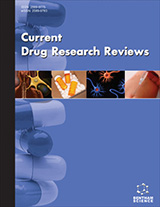
Abstract
Background: Fatty acid synthase (FASN) is generally over-expressed in human tumor tissues and catalyzes de novo synthesis of fatty acids on which tumor cells depend. Bestatin, an inhibitor of aminopeptidase/CD13, is one of the dipeptide substrates for the human oligopeptide transporter 1 (PEPT1).
Objectives: In the current study, we aimed to uncover the role of FASN inhibitors in bestatininduced tumor cell apoptosis and the underlying mechanism, extending our understanding of the correlations between FASN and PEPT1 in cancer and providing a new strategy for tumor targeted treatment.
Methods: Cerulenin, orlistat and siRNAs were applied to inhibit FASN. The cell viability and apoptosis were assessed with MTT (thiazolyl blue tetrazolium bromide) assays and annexin VFITC/ PI staining with flow cytometry analysis. Western blot and qRT-PCR analysis were used to detect the protein levels and mRNA levels of the indicated genes in tumor cells, respectively. Protein degradation or stability was examined with cycloheximide chase assays. CD13 activity was detected by gelatin zymography. The HT1080 and C26 xenografts models were conducted to assess the efficacy in vivo.
Results: In the current study, we found that inhibiting FASN by cerulenin and orlistat both augmented the effects of bestatin in decreasing tumor cell viability. Cerulenin increased the apoptosis rates and enhanced the cleavage of PARP caused by bestatin. Furthermore, cerulenin, orlistat and siFASNs markedly elevated PEPT1 protein levels. Indeed, cerulenin induced the upregulation of PEPT1 mRNA expression rather than affecting the protein level after the cells were treated with CHX. And Gly-Sar, a typical competitive substrate of PEPT1, could attenuate the augment of bestatin-induced cell killing by cerulenin. Moreover, synergistic restrain of tumor growth accompanied by a reduction of Ki-67 and increment of TUNEL was significantly achieved in the xenograft models. Interestingly, no clear correlation was observed between the CD13 with FASN and/or PEPT1 in tumor cells.
Conclusion: FASN inhibitors facilitate tumor cells susceptible to bestatin-induced apoptosis involving the up-regulation of PEPT1 at the mRNA translation level and the transport of bestatin by PEPT1, emerging as a promising strategy for tumor targeted therapy.
Graphical Abstract
[http://dx.doi.org/10.1016/j.cell.2011.02.013] [PMID: 21376230]
[http://dx.doi.org/10.1186/s40170-020-00222-9] [PMID: 32670573]
[http://dx.doi.org/10.1126/science.124.3215.269] [PMID: 13351639]
[http://dx.doi.org/10.1002/ijc.29261] [PMID: 25302649]
[http://dx.doi.org/10.1016/j.pharmthera.2017.02.021] [PMID: 28202364]
[http://dx.doi.org/10.1159/000342967] [PMID: 23306391]
[http://dx.doi.org/10.1158/1078-0432.CCR-15-0126] [PMID: 26519059]
[http://dx.doi.org/10.1038/cddis.2013.60] [PMID: 23470539]
[http://dx.doi.org/10.1158/1535-7163.MCT-12-1136] [PMID: 24362464]
[http://dx.doi.org/10.1158/1541-7786.MCR-18-0199] [PMID: 30154249]
[http://dx.doi.org/10.1111/j.1349-7006.2010.01596.x] [PMID: 20491775]
[http://dx.doi.org/10.1080/13543784.2018.1471132] [PMID: 29723075]
[http://dx.doi.org/10.1016/j.adro.2020.06.022] [PMID: 33083663]
[http://dx.doi.org/10.1080/10717544.2018.1480675] [PMID: 29890854]
[http://dx.doi.org/10.2147/DDDT.S151725] [PMID: 29263649]
[http://dx.doi.org/10.1016/j.sbi.2016.10.018] [PMID: 27865112]
[http://dx.doi.org/10.1042/BST20180302] [PMID: 32219385]
[http://dx.doi.org/10.1111/bph.13356] [PMID: 26444978]
[http://dx.doi.org/10.1007/s10735-011-9365-z] [PMID: 22006287]
[http://dx.doi.org/10.1111/j.2042-7158.1997.tb06115.x] [PMID: 9379359]
[http://dx.doi.org/10.3389/fbioe.2020.577656] [PMID: 33015026]
[http://dx.doi.org/10.1007/BF00205797] [PMID: 2909281]
[http://dx.doi.org/10.1016/j.cyto.2008.10.011] [PMID: 19036603]
[http://dx.doi.org/10.20892/j.issn.2095-3941.2020.0196] [PMID: 33710811]
[http://dx.doi.org/10.3892/or.2015.4091] [PMID: 26136140]
[http://dx.doi.org/10.3390/nu13051448] [PMID: 33923345]
[http://dx.doi.org/10.1016/j.ejps.2010.03.010] [PMID: 20307658]
[http://dx.doi.org/10.3892/ijo.2014.2664] [PMID: 25340499]
[http://dx.doi.org/10.1080/1042819031000122033] [PMID: 14738154]
[http://dx.doi.org/10.3390/molecules25173935] [PMID: 32872164]
[http://dx.doi.org/10.1042/BST20110767] [PMID: 22435805]
[http://dx.doi.org/10.1016/j.pdpdt.2019.01.009] [PMID: 30639584]
[PMID: 9307302]
[PMID: 9458100]
[http://dx.doi.org/10.18632/oncotarget.17117] [PMID: 28465466]
[http://dx.doi.org/10.3748/wjg.v9.i4.808] [PMID: 12679938]
[http://dx.doi.org/10.1183/13993003.01610-2017] [PMID: 29519924]
[http://dx.doi.org/10.3892/ijo.2016.3496] [PMID: 27121124]
[http://dx.doi.org/10.1016/j.bbagen.2013.12.026] [PMID: 24380877]
[http://dx.doi.org/10.1093/jn/134.12.3499S] [PMID: 15570060]
[http://dx.doi.org/10.1002/cphy.c170038] [PMID: 29687907]
[http://dx.doi.org/10.1002/jbt.20116] [PMID: 16615093]
[http://dx.doi.org/10.1002/jcb.240590210] [PMID: 8904315]
[http://dx.doi.org/10.1016/j.bmcl.2008.04.031] [PMID: 18448338]
[http://dx.doi.org/10.1074/jbc.M709525200] [PMID: 18230607]
[http://dx.doi.org/10.1186/s13020-021-00426-1] [PMID: 33526051]

























